The lilacs of Fayuan Temple, the crabapples of Jile Temple, the moutan peonies of Chongxiao Temple, and the chinese peonies of Tianning Temple were once known as the four great flower events of old Beijing. Each spring, the city blooms with vibrant flowers, enchanting poets and scholars who compose verses and couplets. Although only the lilacs of Fayuan Temple remain today, there are still plenty of great spots in Beijing to enjoy moutan peonies. Join us for a springtime floral event!
Moutan peonies, known as the "King of Flowers," have the reputation of being the "national flower." Their blooming period spans from mid to late April to early May. People's love and reverence for moutan peonies are not only due to their regal beauty and the auspicious symbolism of wealth and prosperity they carry but also because they embody the Chinese people's longing and pursuit for a better life.
Jingshan Park
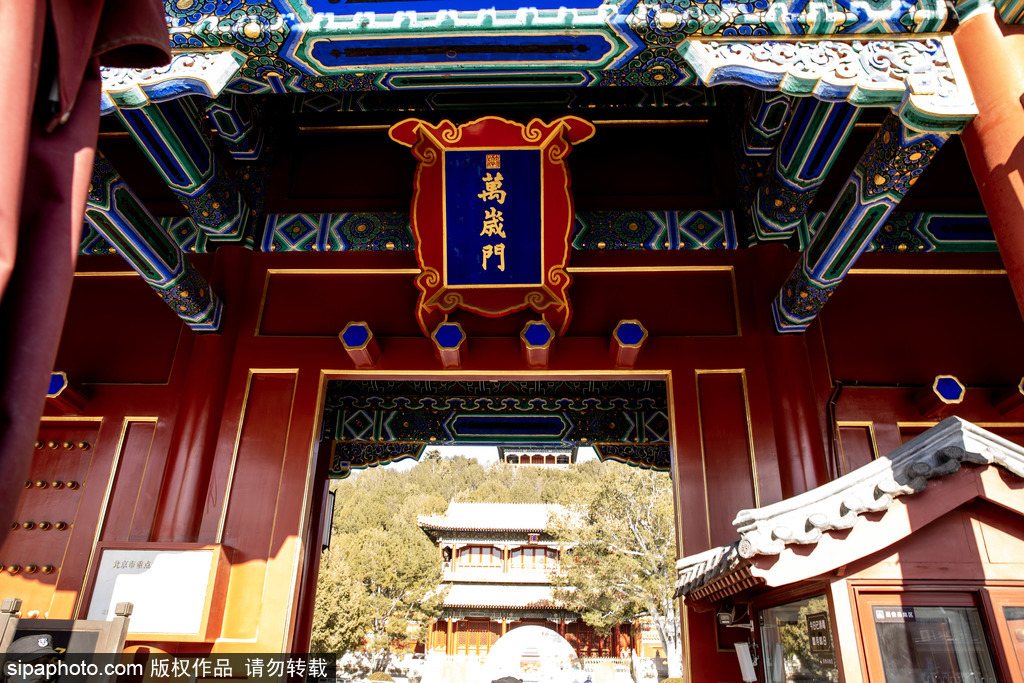
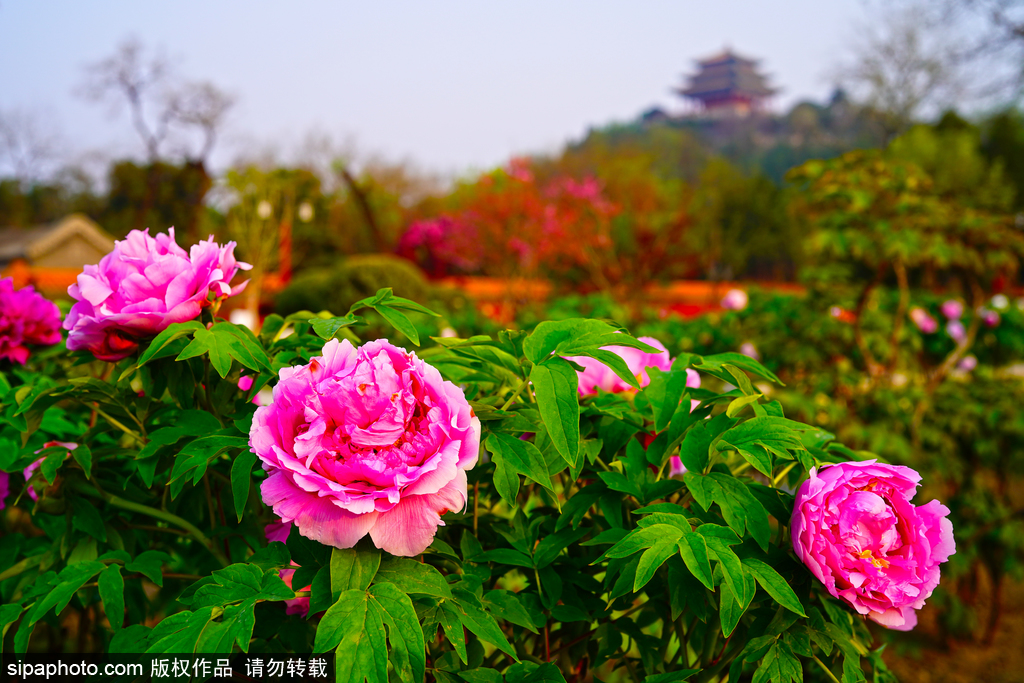
Located at the central axis of Beijing, south facing the majestic Forbidden City and north facing the Drum Tower, Jingshan Park was once an imperial garden during the Yuan, Ming, and Qing dynasties. It is one of the oldest and most well-preserved imperial gardens in China. As spring returns to the earth, the park is adorned with blooming flowers, creating a vibrant and lively scene.
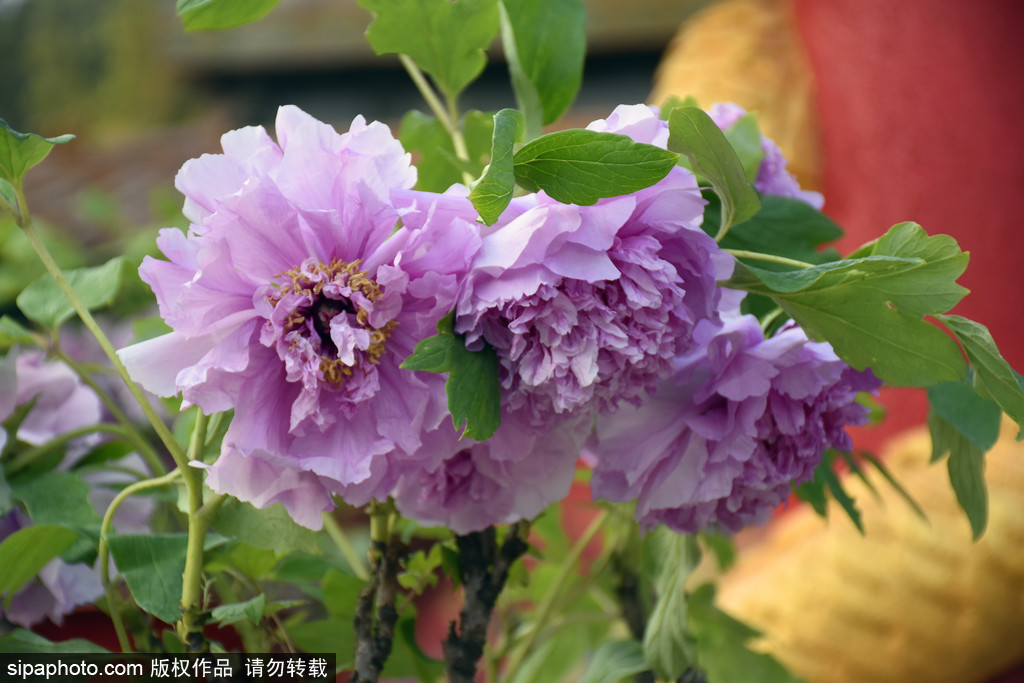
Moutan peonies are a significant feature of Jingshan Park, with a long history of cultivation. The park boasts 569 varieties of moutan peonies from home and abroad, covering nine color systems and ten flower types. These include 346 varieties of central plains moutan peonies, traditional moutan peony varieties from the imperial gardens, the famous Luoyang moutan peonies, and Heze moutan peonies; 109 varieties of the rare Northwest Purple Spot moutan peonies, and 114 foreign moutan peony varieties.
The best viewing spots in the park are along the main roads of the front and back hills and the moutan peony garden inside the east gate.
As the spring breeze sweeps through Beijing, the Jingshan Park Peony Culture Festival arrives as expected, opening on April 11th this year.
This year, Jingshan Park integrates the unique flower moutan peony with the park's rich historical and cultural heritage through special landscape arrangements, cultural exhibitions, garden activities, and cultural and creative markets, showcasing the profound historical and cultural connotations of Jingshan peonies and inviting citizens and tourists to enjoy the famous moutan peonies of Beijing.
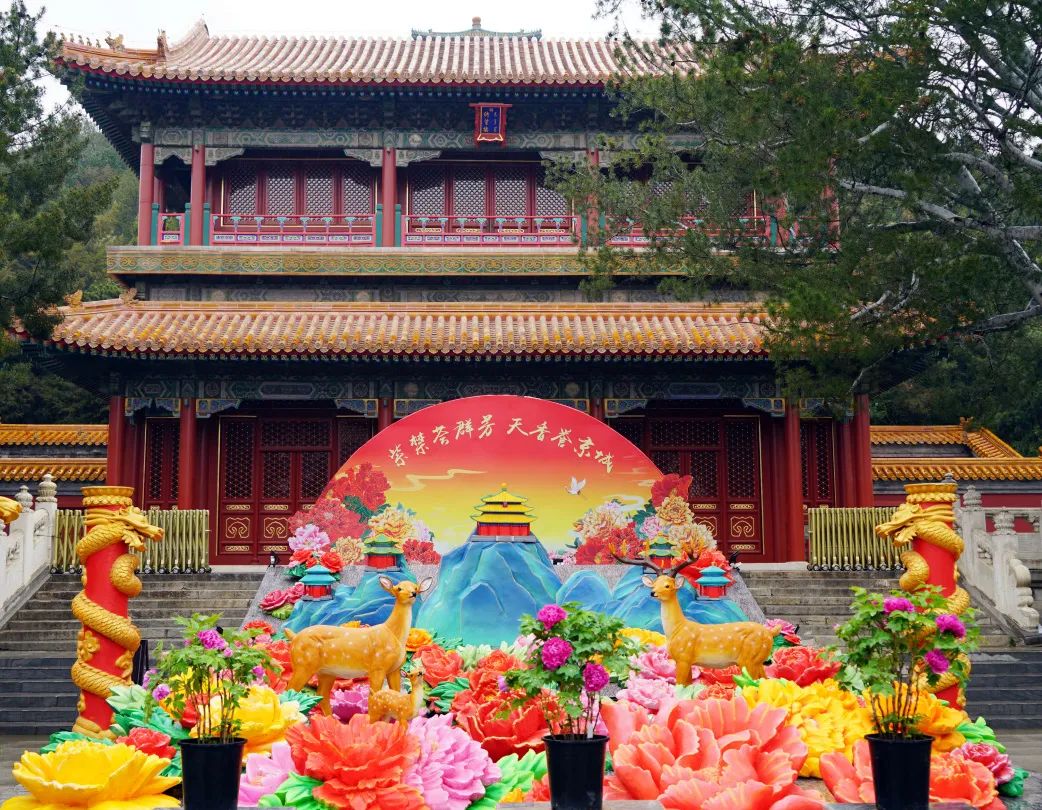
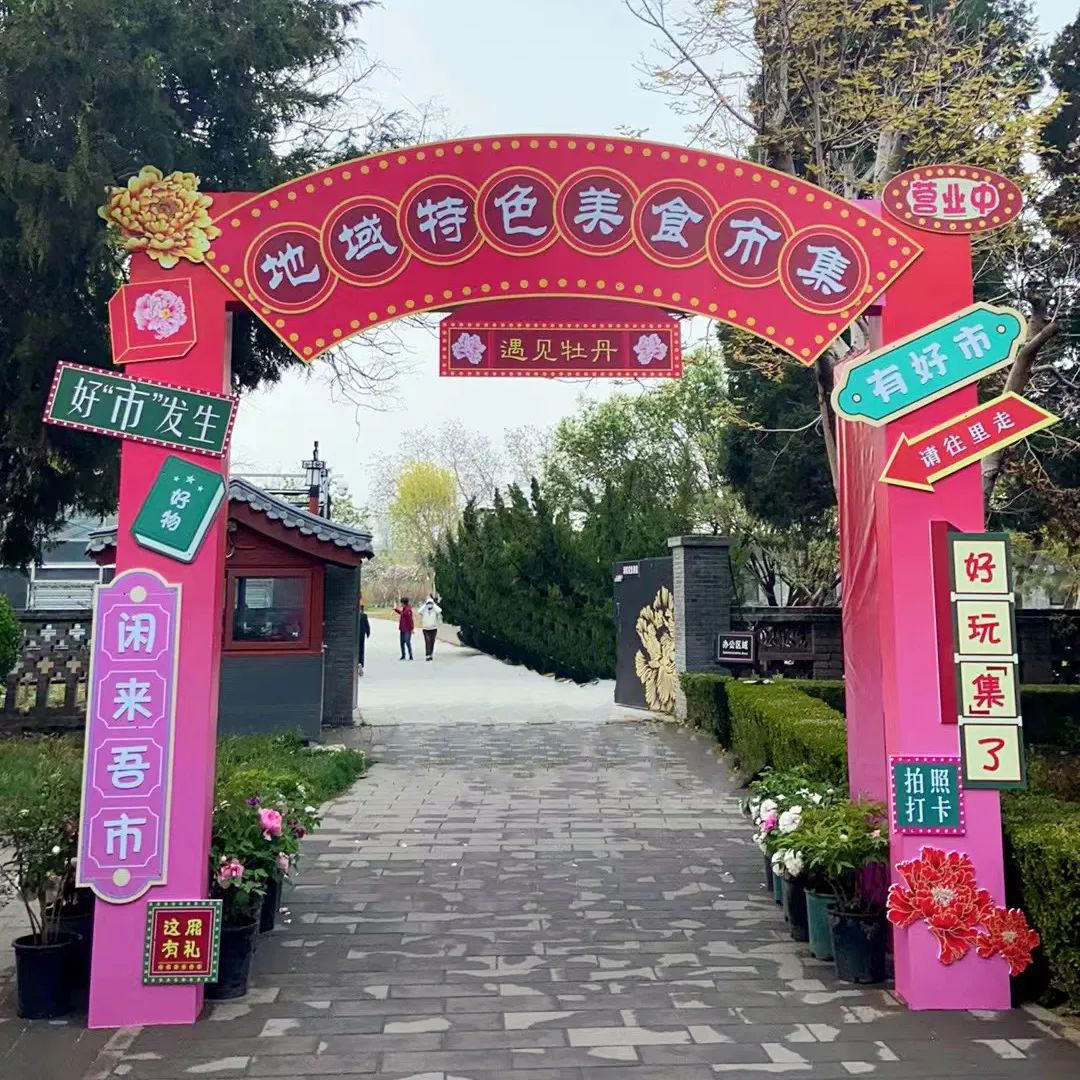
The west area also features a gourmet market with delicacies from all over the country. Whether traditional Jiangsu and Zhejiang pastries, Sichuan and Chongqing delicacies, Northwest specialties like Tianshui spicy noodles, or Russian-style fried chicken skewers, you can find them all here.
Cultural markets are set up at the east and south gate squares, allowing every visitor to immerse in the rich cultural atmosphere. The market offers various moutan peony-themed cultural and creative products and intangible cultural heritage items.
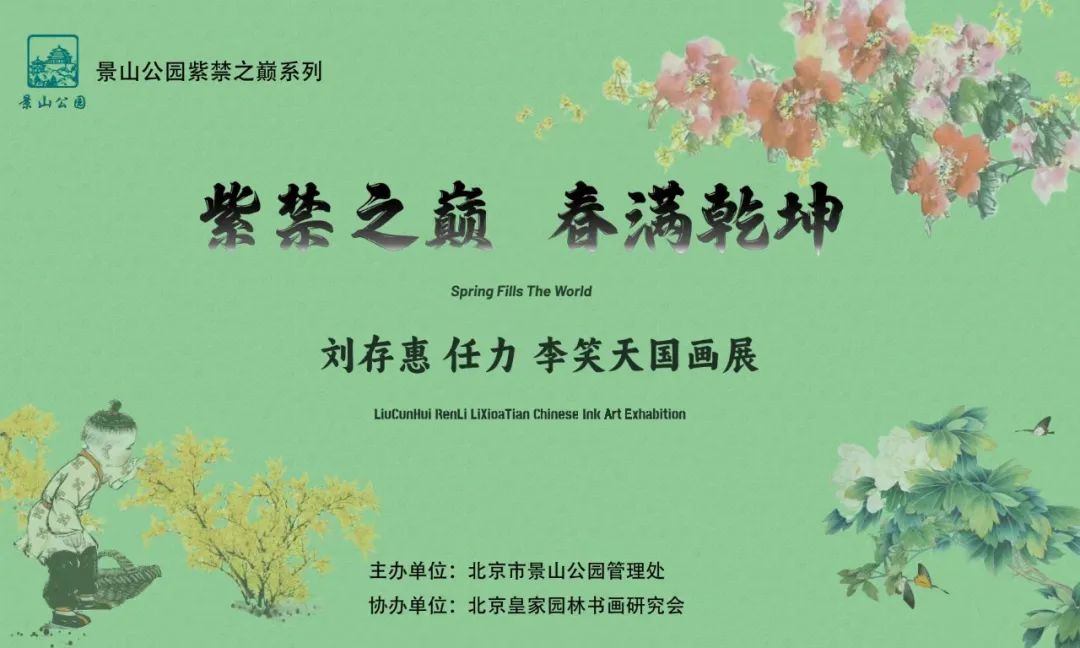
The "Spring Fills The World" Chinese painting exhibition is one of the highlights of the Jingshan Park Peony Cultural Festival. The Guande Hall will display several paintings by renowned artists. Visitors can not only appreciate the unique charm of Chinese painting, a national treasure, amidst the spring scenery but also enjoy the beautiful feeling of "being in the painting" while viewing the artworks.
Address: No. 44 Jingshan Xijie(West Street), Xicheng District Beijing
Old Summer Palace

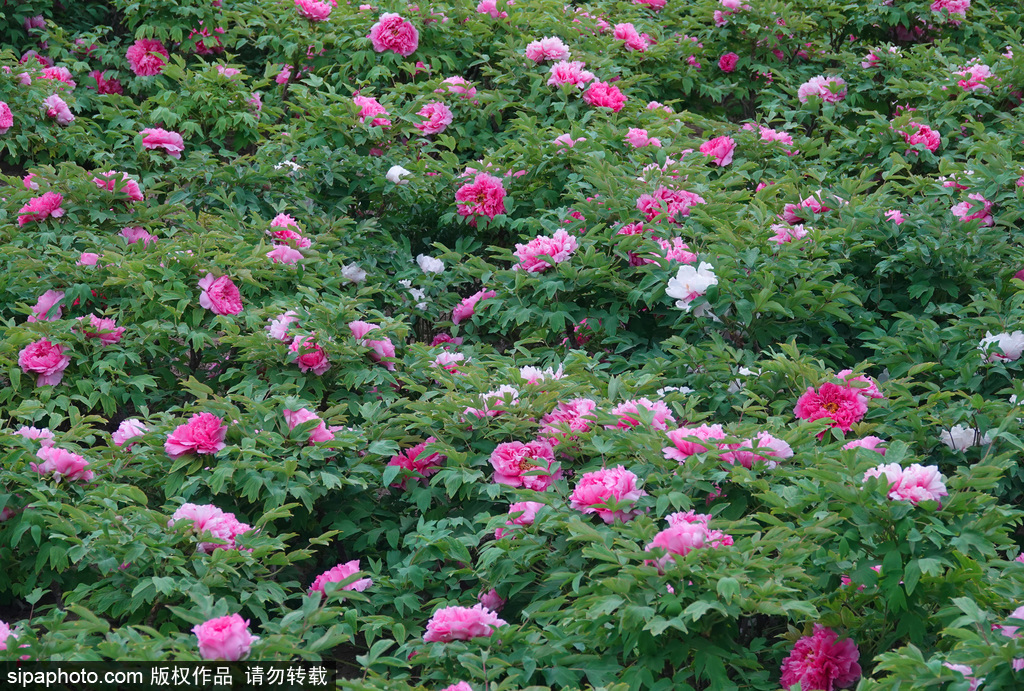
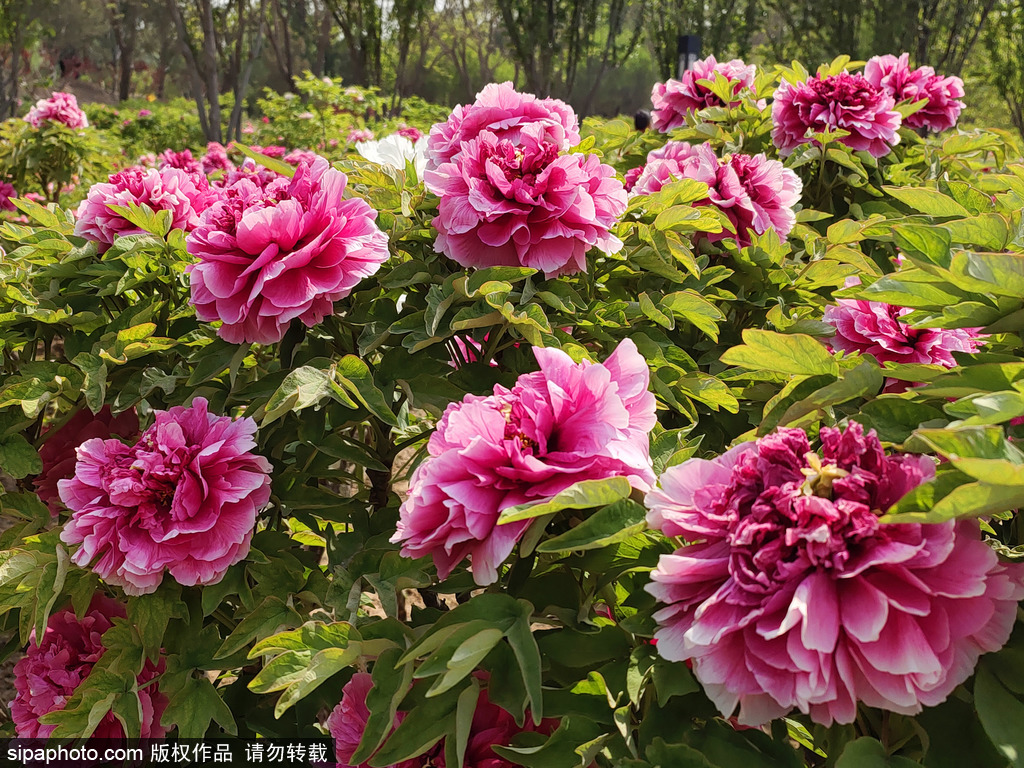
Old Summer Palace, comprising Old Summer Palace, Changchunyuan, and Qichunyuan, is a historical park and a former imperial garden, representing one of China's ancient royal gardens. It is a 5A national scenic spot and a UNESCO World Heritage site.
In the most beautiful April days, Old Summer Palace is filled with blooming flowers and boundless spring scenery.
Who says spring ends in April? Moutan peonies start blooming, and spring is still in full swing. Just a glance at these renowned moutan peonies in Beijing captures the endless spring beauty. After years of meticulous cultivation, Old Summer Palace now has three peony viewing areas: Hanjing Hall, Luyue Kaiyun, and Zao Garden, perfect for photography.
Among these, the Hanjing Hall viewing area is the largest, with nearly a hundred varieties of moutan peonies, including famous ones like Wei Zi, Yao Huang, Zhao Fen, and Dou Lu.
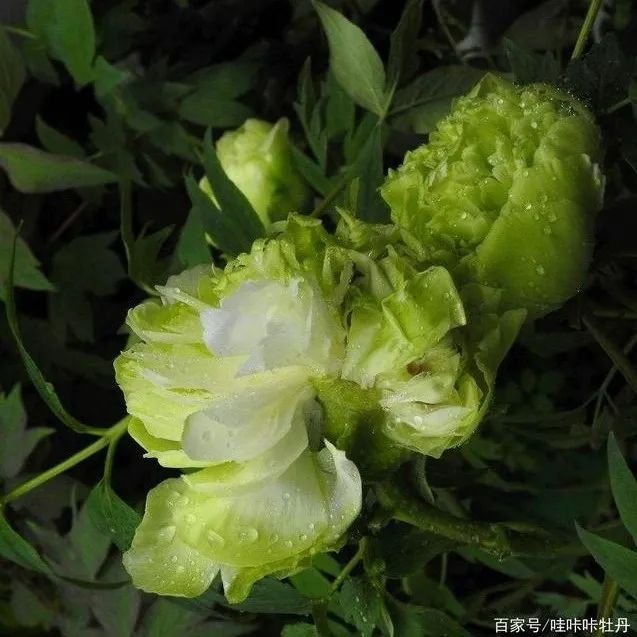
The Zao Garden moutan peony viewing area is the closest to the entrance. Visitors can enjoy a red, pink, and purple sea of moutan peonies upon entering through the Zao Garden gate. The floral scents, wafting with the spring breeze, are captivating. The peonies here are vibrant, with single, double, and multi-layered petals, resembling crowns, pavilions, and pom-poms. It is an ideal spot for flower viewing, photography, sketching, and ancient style enthusiasts.
Luyue Kaiyun is one of the forty scenic spots in Old Summer Palace, located at the southeastern corner of the Rear Lake. Initially called " Moutan Peony Terrace," it was renamed "Jien En Hall" during the ninth year of Qianlong. Although the original structures have faded into history, the flourishing moutan peonies speak volumes of the endless beauty and vitality of the ruins.
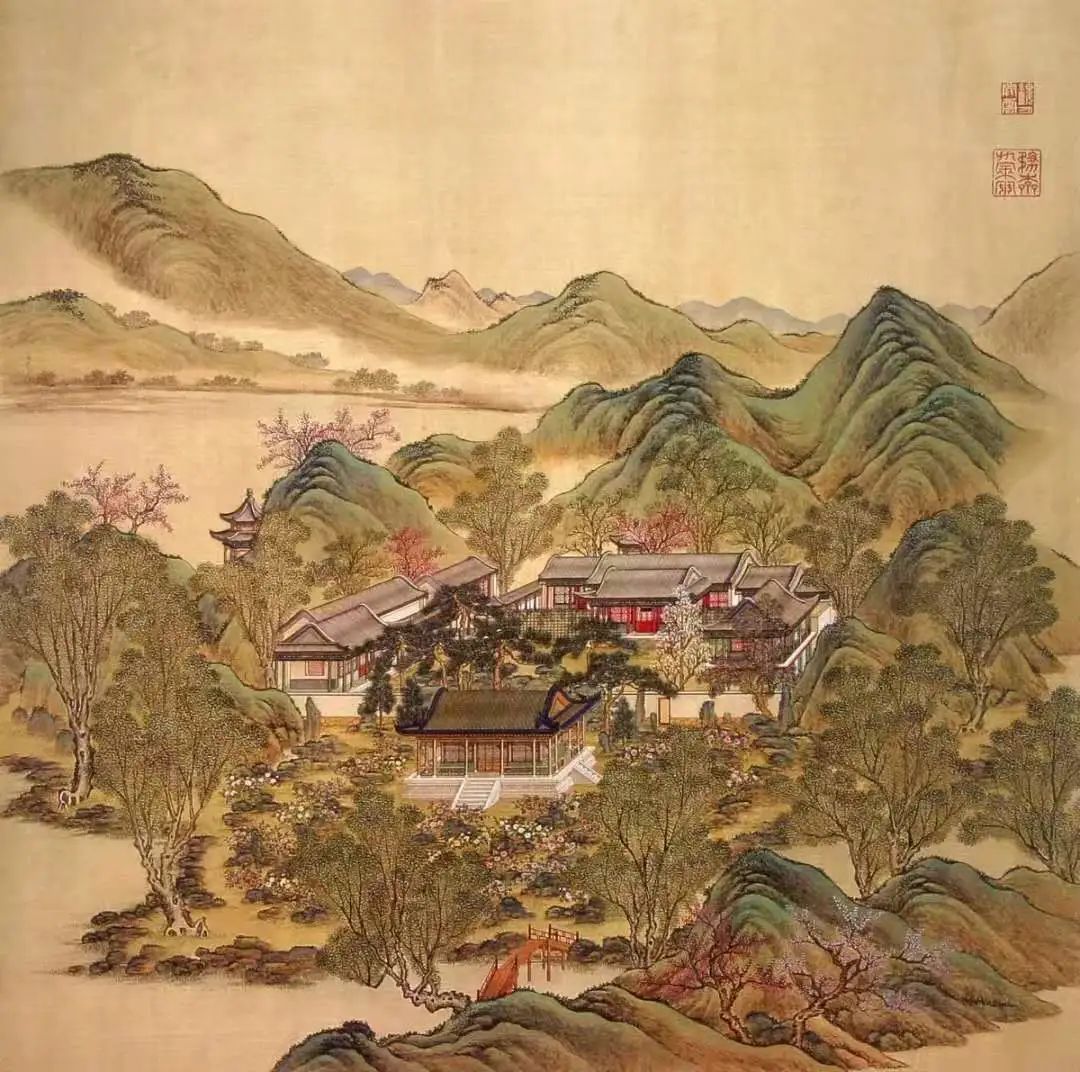
Address: No. 28 Qinghua Xilu(West Road), Qinglongqiao Jiedao(St)Haidian District , Beijing
National Botanical Garden
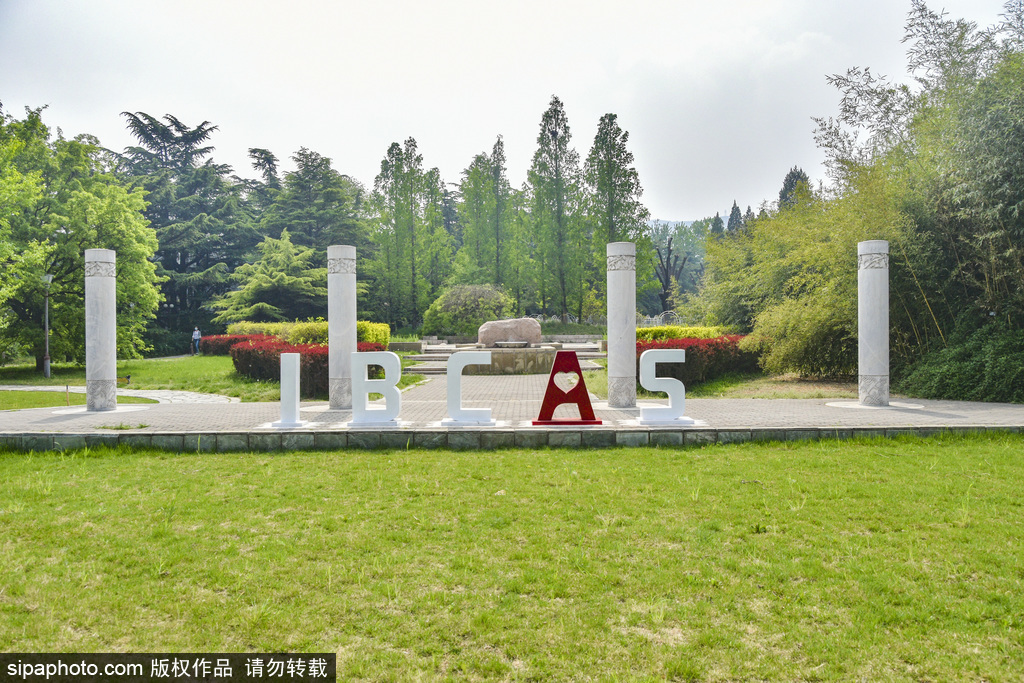
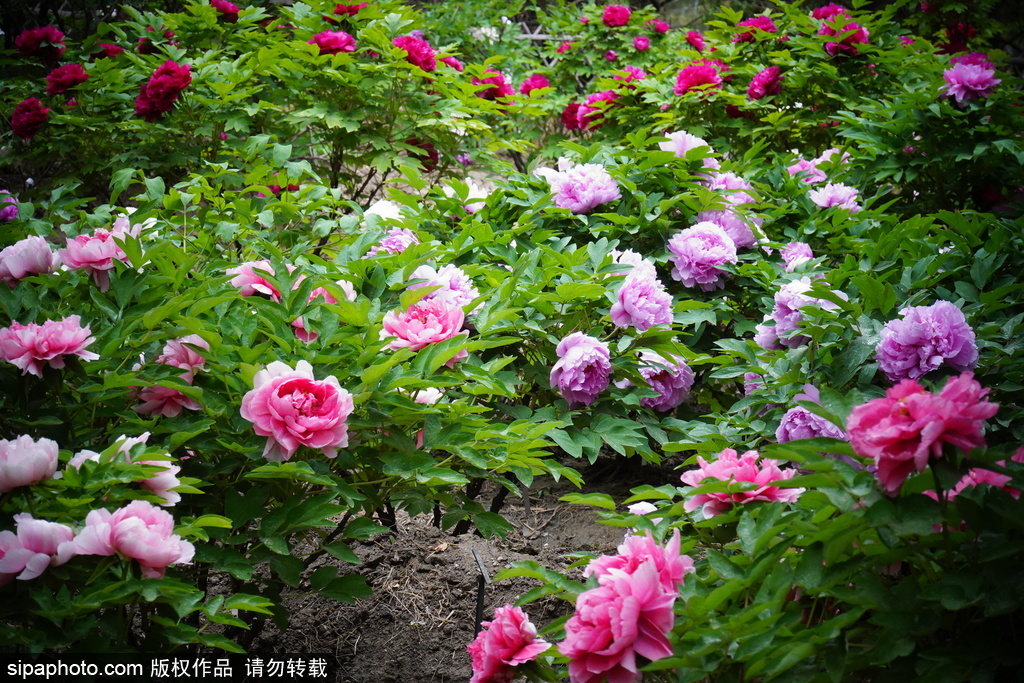
The National Botanical Garden, located in Haidian District, Beijing, is China's first national botanical garden and serves as a demonstration area for plant diversity conservation, integrating scientific research, science education, garden art, and cultural leisure functions.
Spring in the National Botanical Garden is like a sea of flowers, filled with warmth and hope, as picturesque as a poem.
The National Botanical Garden's peony garden includes four major systems: Central Plains Moutan Peony, Northwest Moutan Peony, Jiangnan Moutan Peony, and Southwest Moutan Peony. The peonies on display cover all nine color systems, showcasing a variety of vibrant and graceful colors.
The best viewing areas are the North Garden Peony Garden and the South Garden Peony Garden.
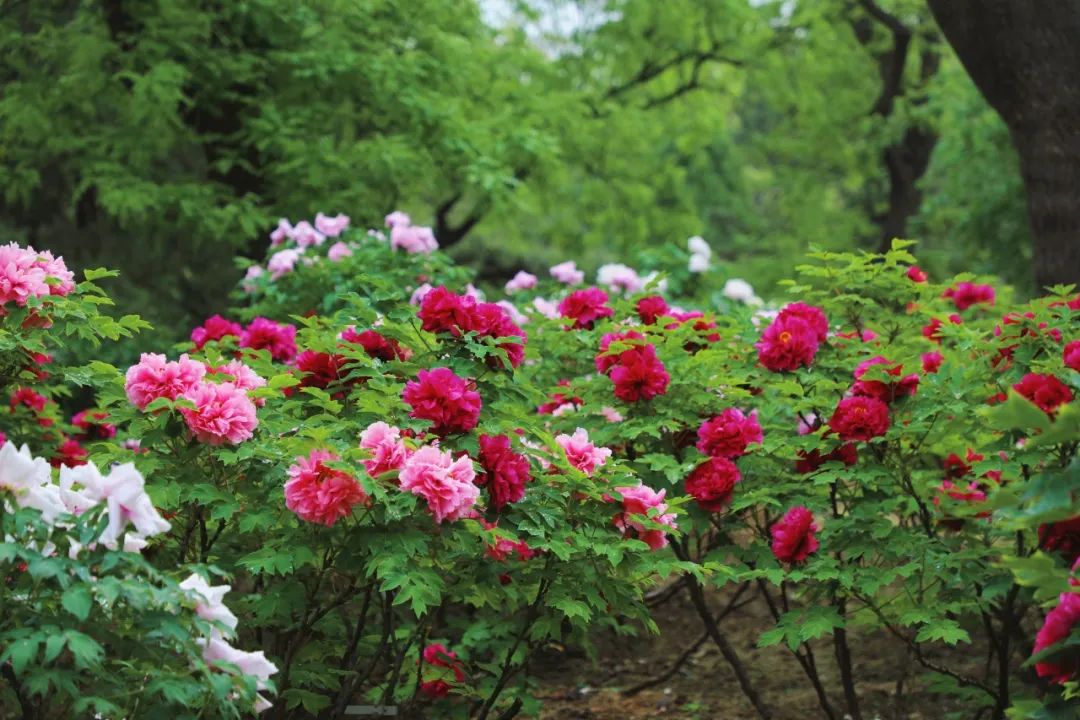
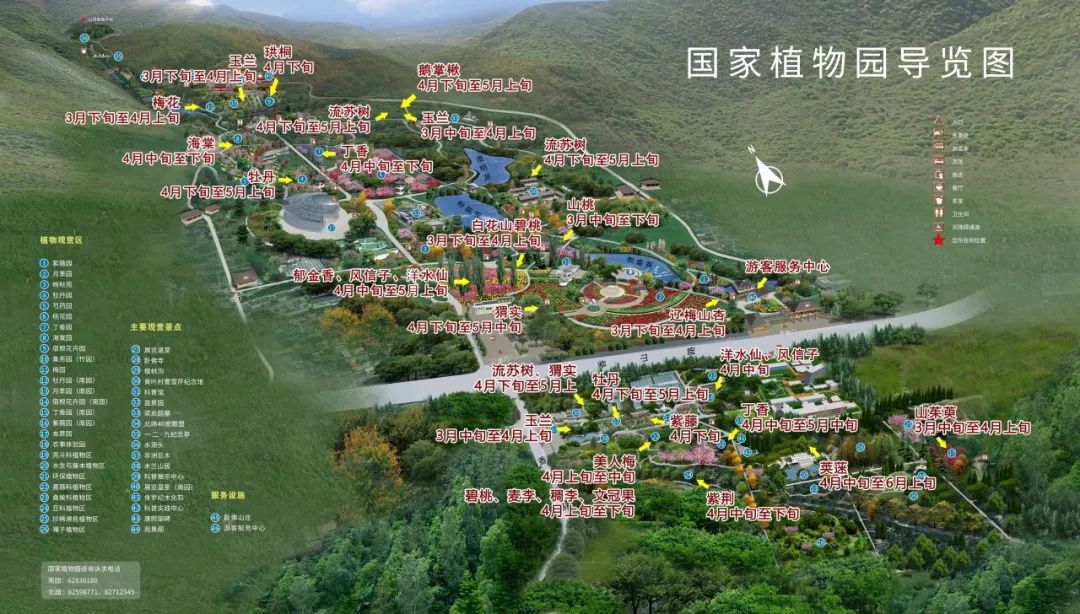
The National Botanical Garden's Second Peach Blossom Viewing Season and World Famous Flowers Exhibition will continue until May 5th. The garden currently displays over 1,000 spring-flowering plants (including varieties). Traditional spring flowers like plum blossoms, crabapples, lilacs, and tulips are dazzling, while lesser-known spring flowers like fringe trees, Xanthoceras sorbifolia, and Davidia involucrata are also eye-catching. Nearly 400,000 spring flowers will bloom throughout the spring, adding vibrant colors to the season.
Address: Northeast corner of the intersection of Xiangshan Lu(Rd)and Zhongzhou Lu(Rd), Haidian District,Beijing
Qianqing Aicao Xianlong Garden
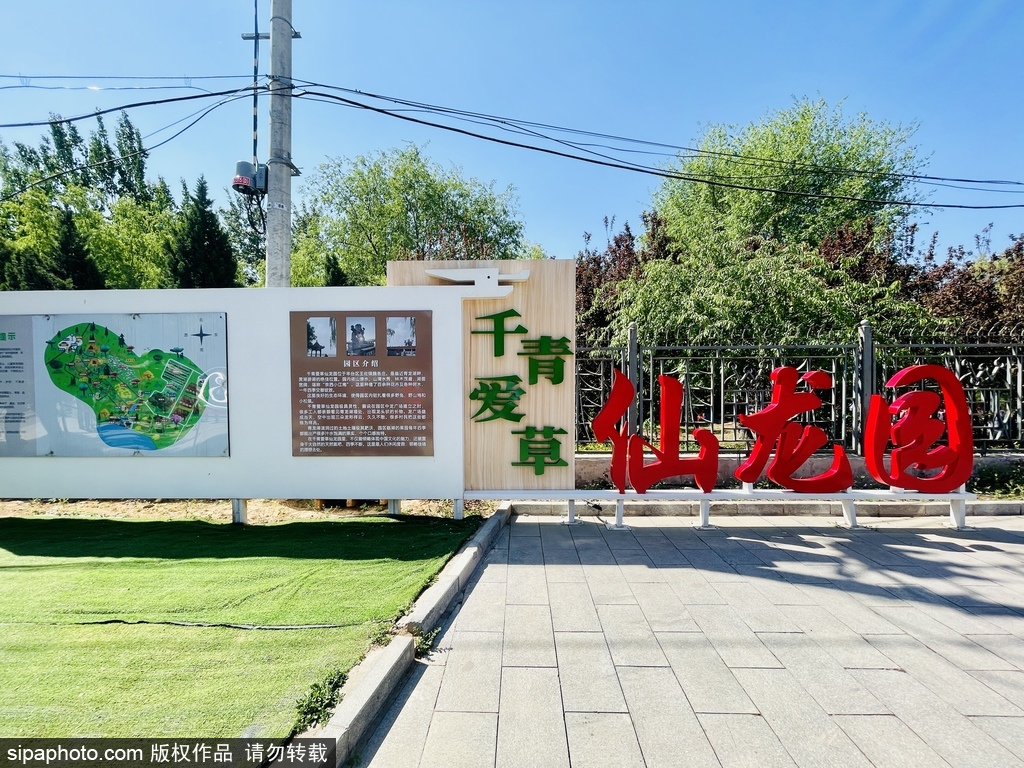
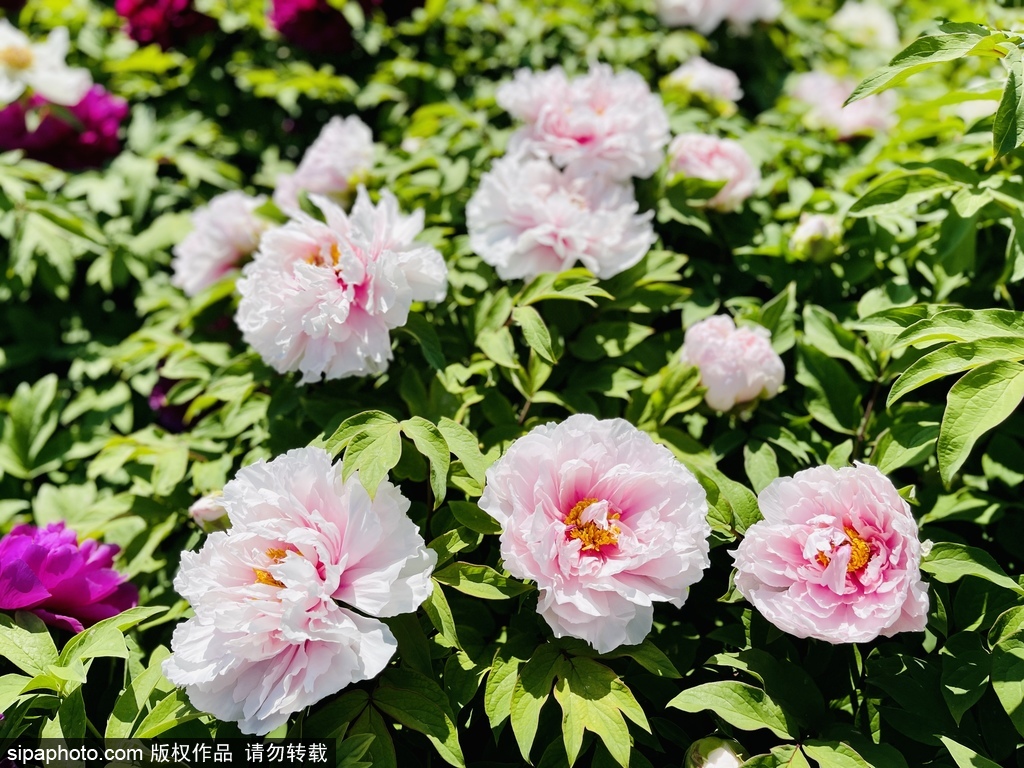
Qianqing Aicao Xianlong Garden, located in Wangzuo Town, Fengtai District, offers a scenic viewing platform adjacent to Qinglong Lake Park, providing a distant view of the Qinglong Lake scenery. The garden is surrounded by mountains and water, with lush forests and expansive lake views. The park cultivates hundreds of flower species and various trees, presenting a floral display throughout the year.

The garden's moutan peonies are in full bloom, whether exploring the romantic flower sea to find the "King of Peonies" or strolling through the park's spring scenery and encountering the vibrant moutan peony sea. It feels like entering a dreamlike ocean.
The 2024 Fengtai·Wangzuo Romantic Moutan Peony Flower Festival is set to open grandly, inviting everyone to visit. From April 20th to May 13th, come and experience a carefully crafted visual feast of romantic moutan peonies and enjoy a warm springtime tour.
Besides flower viewing, there are also petting zoos and exciting performances waiting for you.
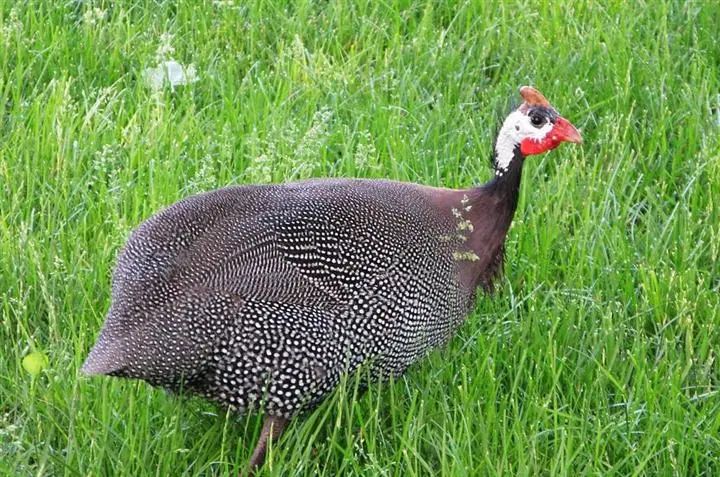
Address: Liangsan Lu(Rd), Fengtai District, Beijing
Tanzhe Temple
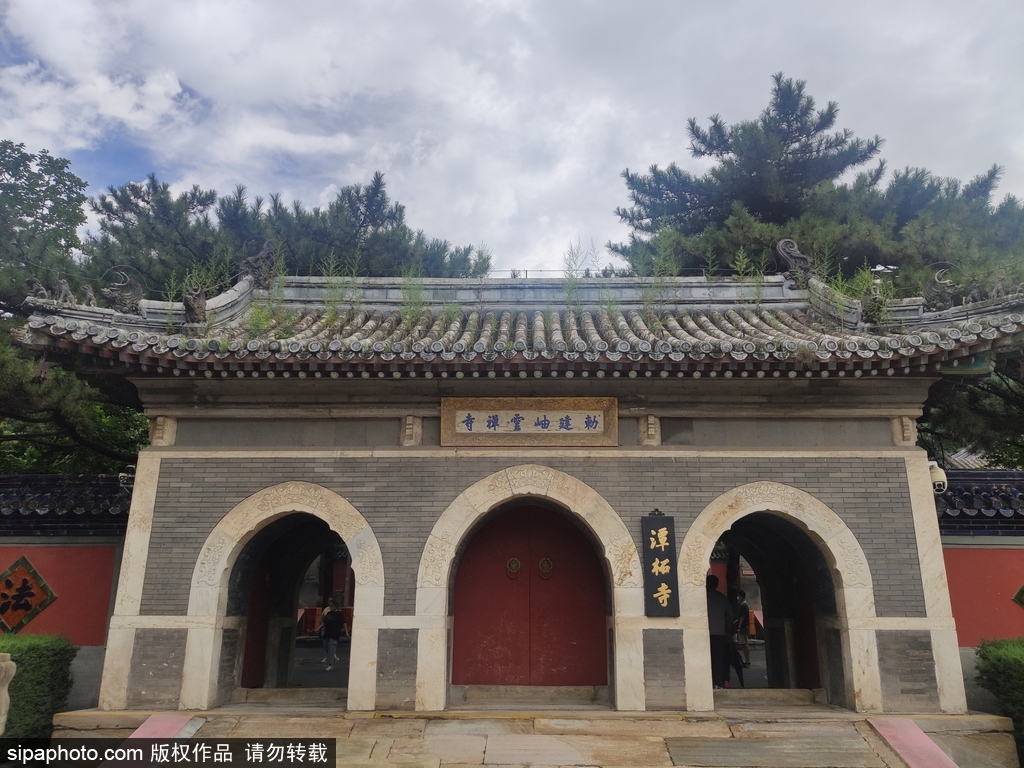
Tanzhe Temple , located at the foot of Tanzhe Mountain in the southeastern part of Mentougou District, Beijing, faces north and was built in the first year of Yongjia of the Western Jin Dynasty (307 AD). It is the oldest temple in Beijing, constructed after Buddhism was introduced to the region. "First there was Tanzhe Temple, then there was Beijing," highlighting the temple's long history.
Spring at Tanzhe Temple features three major floral events: Erqiao magnolias, lilacs, and moutan peonies.

Tanzhe Temple's moutan peonies are diverse, with large flowers in various colors. Grown in the temple, surrounded by incense, the moutan peonies seem more spiritual.
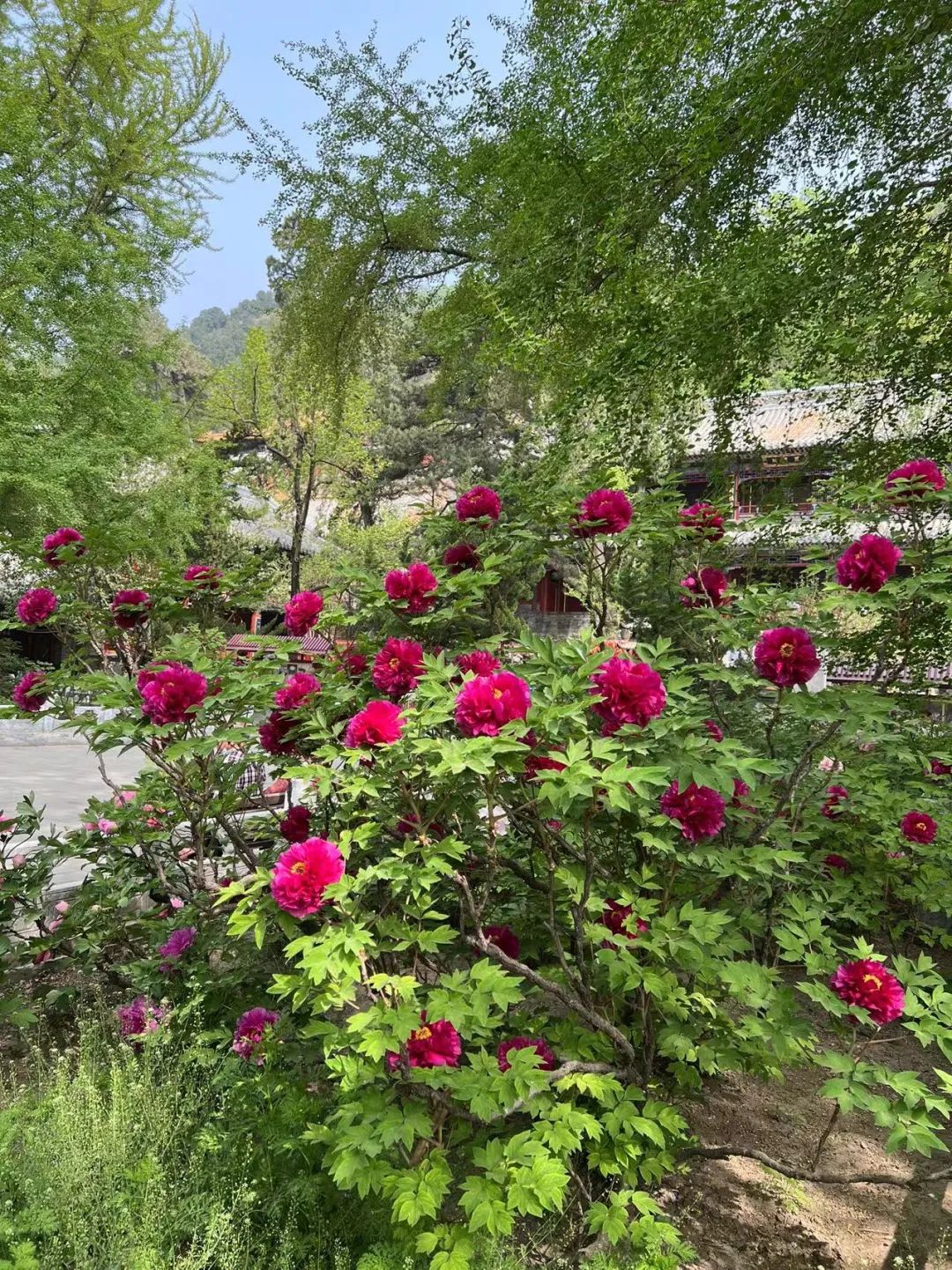
Among the many moutan peonies, there is a unique two-colored moutan peony with petals of two different colors, creating a charming contrast. When walking through this flower world, be sure to find this "one flower, two colors" moutan peony!
Address: Tanzhe Temple Scenic Area, Mentougou District, Beijing (143 meters from Sangyu Bus Station)



